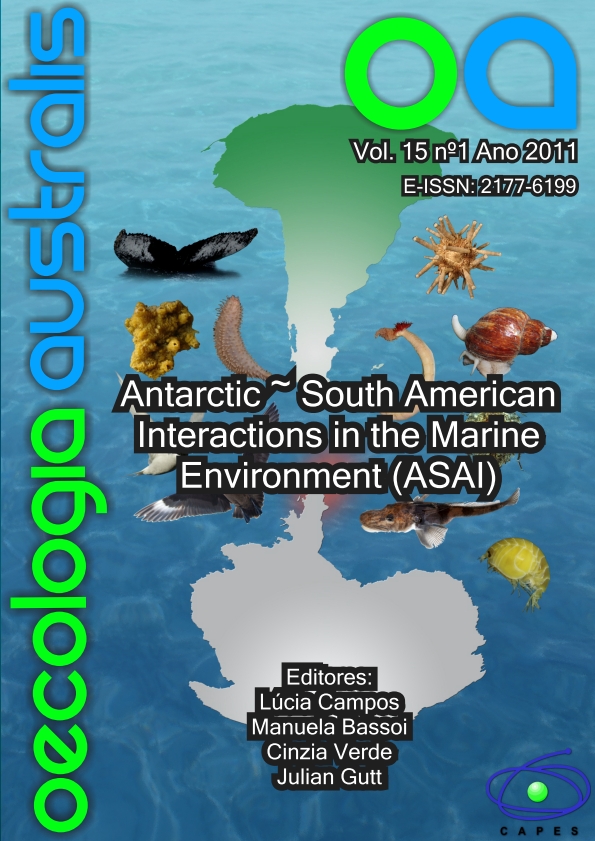PLASTICS IN THE ANTARCTIC ENVIRONMENT: ARE WE LOOKING ONLY AT THE TIP OF THE ICEBERG?
Keywords:
exotic species, A. gazella, Procellariiformes, nylon fishing lines, plastic fragments.Abstract
The available literature on marine debris and its impacts in the sub-Antarctic Islands, the Antarctic Peninsula and on the coasts of Antarctica was organized and interpreted here. A total of 98 documents covering from 1982 to 2010 were found and 95% had their full contents accessed. Seventy documents were on line scientific abstracts from the Commission on the Conservation of Antarctic Marine Living Resources (CCAMLR). The occurrence of marine debris in the Antarctic environment, fur seals entanglement in marine debris, interactions between seabirds and marine debris and long range transport of benthos on floating plastics were the main issues discussed. Fishing operations in the Southern Ocean were identified as the major source of marine debris, but according to the type of debris reported, plastics from lower latitudes may also cross the Polar Front (PF). Possible links between Antarctic and South America, the closest intercontinental connection, in relation to plastic marine debris pollution are highlighted. As reported for lower latitudinal gradients, plastic pollution is an important problem to the Antarctic environment. However, specific and detailed works are necessary since our current knowledge probably expose only a small part of the real problem. Concerning this sort of pollution in the Antarctic marine and coastal environments, we may be looking solely at the tip of iceberg.


